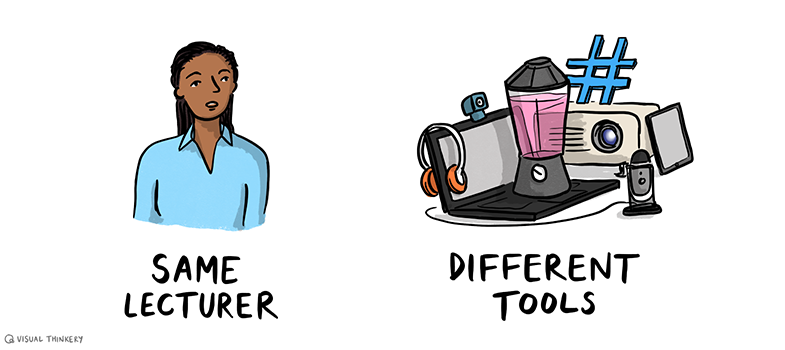1.7 Web conferencing platforms
Most higher education institutions have invested in at least one learning platform with web conferencing functionality to support online and blended learning. You may have heard of Adobe Connect, Microsoft Teams and Blackboard Collaborate, for example, but there are many similar products available, including tools designed for individual use such as Skype, Zoom or Google Meet (formerly Hangouts). These applications provide opportunities for online teaching scenarios, as well as screensharing, group work, peer review and more.
The greatest strengths of such applications tend to be in synchronous learning or collaboration, although they can also be readily combined with tools such as discussion forums to broaden their impact to asynchronous environments (Çakiroglu et al., 2016; Guo & Möllering, 2016; Kear et al., 2012). These tools can be used to replicate a seminar environment by wrapping synchronous discussion tools around a central presentation or video with voiceover.
1.6 E-learning development tools






